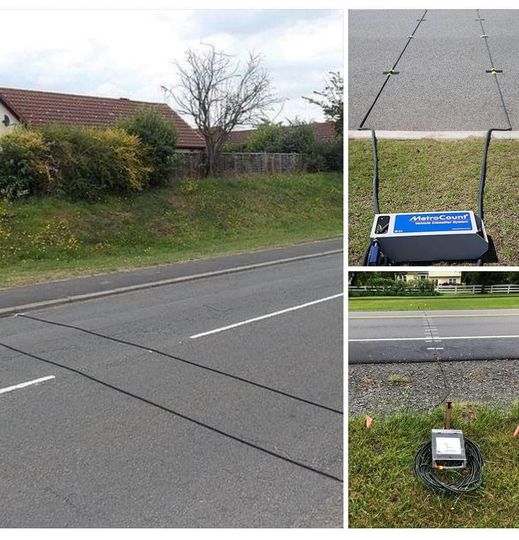Ever Wonder What Those Black Cables Across the Road Are? Here’s What They Do
If you’ve ever driven over black cables stretched across the road, you might have wondered what they’re for. These simple tubes, often crisscrossing roads all over the country, play a more significant role than they appear. In fact, they are crucial tools in traffic management, collecting important data that helps shape our transportation systems.

What Are These Black Tubes?
The black tubes you see on the road are known as pneumatic traffic counters. These unassuming devices are designed to gather data on traffic patterns, vehicle counts, and road usage. This data is essential for transportation authorities who rely on accurate information to make decisions about road management, safety measures, and infrastructure planning.
How Do They Work?
The operation of these tubes is surprisingly simple. Every time a vehicle’s tires pass over the tube, a burst of air is sent through it. This air triggers an electrical signal in a connected counter, which records the event. By analyzing the frequency and timing of these signals, transportation officials can determine the number of vehicles traveling on the road, along with other important details.
Why Does This Data Matter?
Counting Vehicles and More
At its most basic, a single tube counts how many vehicles pass over it. But when two tubes are used together, they can gather more detailed data. This setup allows for measuring vehicle speed, classifying vehicles by their axle count, and even determining the direction of travel. This information is crucial for understanding peak traffic times, setting speed limits, and evaluating road capacity.
How the Data Shapes Traffic Management
The information gathered from these pneumatic counters is critical for making informed decisions about road safety and traffic management. For instance, traffic data can help determine where to place new traffic signs, set appropriate speed limits, and plan for road repairs or expansions. By showing how roads are used, these tubes ensure that transportation systems remain safe and efficient for everyone.
More Than Just Counting: The Versatility of Road Tubes
Temporary vs. Permanent Installations
Traffic counters can be set up temporarily or permanently, depending on their purpose. Temporary setups are often used for a day or two to provide snapshots of traffic patterns or address specific concerns, such as monitoring speeding issues. Permanent installations, on the other hand, provide continuous monitoring, offering long-term data that helps track traffic trends over time.
Strategic Placement for Accurate Data
To ensure they gather the most accurate data possible, transportation agencies place these tubes strategically. They’re typically installed on straight sections of road where traffic flows smoothly. This placement helps avoid interference from variables like sharp curves or frequent stops, ensuring the data reflects typical road usage.
The Role in Traffic Policies and Road Planning
Creating Informed Traffic Policies
The data collected from these road tubes plays a key role in shaping traffic policies. By analyzing traffic flow and vehicle behavior, transportation planners can make decisions about where to install traffic-calming measures, how to design new roadways, and where to allocate resources for road improvements. This data-driven approach ensures roads are not only safe but also capable of handling future traffic demands.
Responding to Public Concerns
These black tubes are also essential in addressing community concerns. If residents report problems like speeding or increased traffic in their neighborhoods, transportation agencies can use these tubes to gather data and verify the issues. This objective information then helps implement solutions, such as installing speed bumps or adjusting traffic signal timings.
The Silent Heroes of Our Roads
The next time you drive over one of these black tubes, take a moment to appreciate the important role they play. These simple devices are the backbone of data collection that influences nearly every decision about road management and safety. Though easy to overlook, they are the silent heroes of our streets, helping to keep our roads running smoothly and efficiently.





